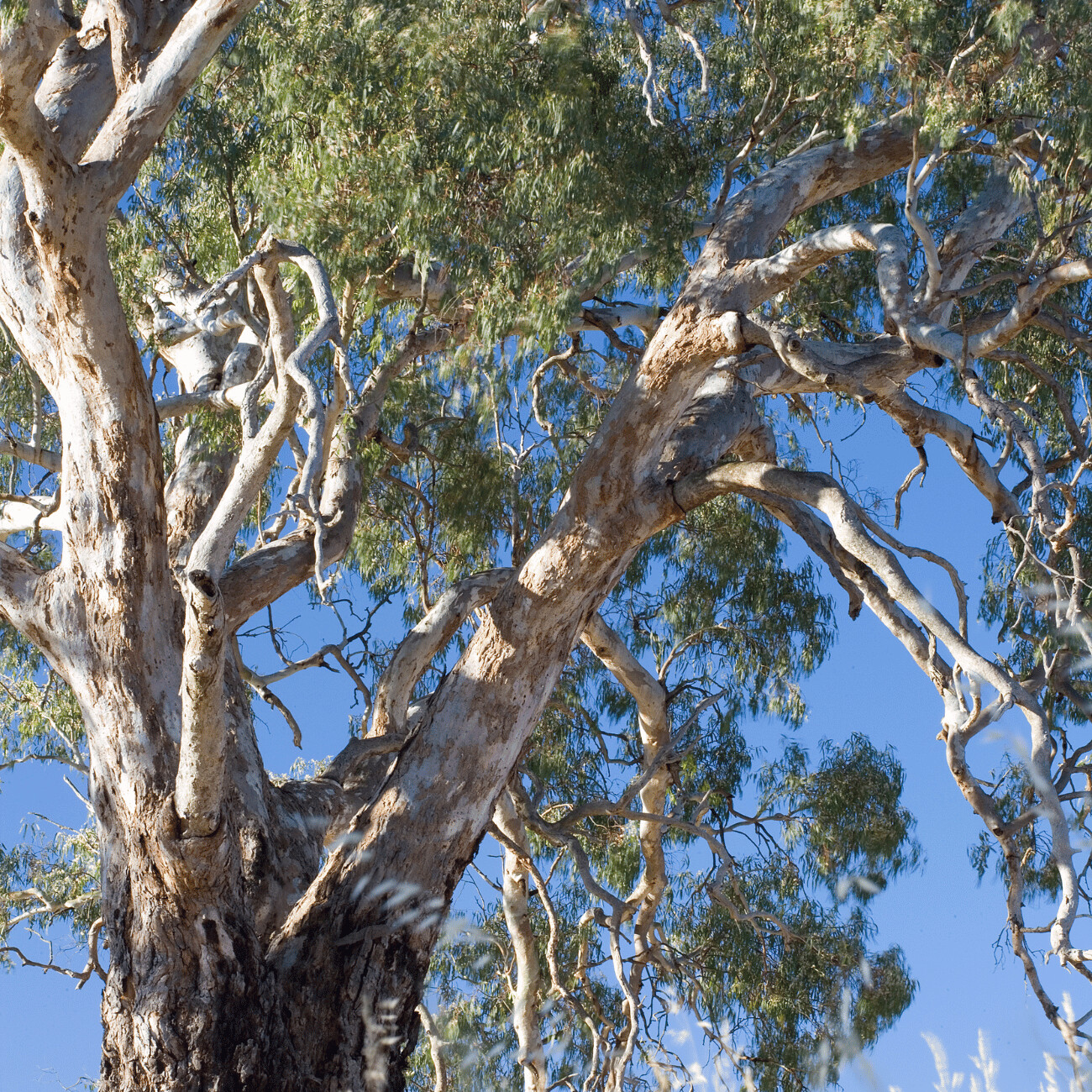BLACKBUTT
Eucalyptus Campanulata: Commonly known as the New England Blackbutt
Eucalyptus campanulata, commonly known as the New England Blackbutt, is a distinctive species of eucalyptus that is native to Australia, specifically the New England region of New South Wales.
This species is part of the diverse Myrtaceae family and is valued for its ecological significance, timber quality, and resilience.
The New England Blackbutt occupies an important place in both natural forests and commercial plantations, thanks to its adaptability and the benefits it provides.
Characteristics
Eucalyptus campanulata is a tall, straight-trunked tree that can reach heights of up to 40-50 metres (about 130-165 feet), making it a prominent feature of the landscapes it inhabits.
The tree's common name, "Blackbutt," derives from its distinctive bark, which is dark, rough, and deeply furrowed at the base, becoming smoother and lighter in colour higher up the trunk. This feature not only provides a striking contrast but also helps protect the tree from fire damage, a common occurrence in its native habitat.
The leaves of the New England Blackbutt are lanceolate, glossy green, and contain essential oils, typical of many eucalyptus species. Its white flowers bloom in clusters, providing a valuable nectar source for bees and other pollinators. Following the flowering period, the tree produces woody, cup-shaped fruit that contains numerous small seeds, essential for its propagation.
Habitat and Distribution
Eucalyptus campanulata is predominantly found in the New England region of northern New South Wales, although its distribution may extend into adjacent areas.
It thrives in a variety of soil types but prefers well-drained, fertile soils often found on slopes and ridges.
The New England Blackbutt is well adapted to the variable climate of its native region, tolerating both cold frosts and hot, dry periods.
Uses and Benefits
Timber: The New England Blackbutt is highly regarded for its strong, durable timber, which is resistant to decay and insect attacks. Its wood is used in a variety of applications, including construction, flooring, decking, and furniture. The timber's attractive appearance, characterised by a straight grain and a warm, reddish hue, also makes it popular for decorative purposes.
Ecological Role: As a native species, Eucalyptus campanulata plays a critical role in its ecosystem. Its flowers are an important food source for pollinators, while its dense foliage offers habitat and shelter for various bird and animal species. The tree also contributes to soil stabilisation and water cycle regulation.
Reforestation and Land Rehabilitation:
Given its robustness and growth rate, the New England Blackbutt is used in reforestation projects and land rehabilitation efforts, particularly in areas prone to erosion or degradation. Its ability to thrive in a range of soil types and conditions makes it an excellent candidate for ecological restoration.
Conservation Status
While Eucalyptus campanulata is not currently listed as endangered, it faces threats from land clearing for agriculture and urban development, which can lead to habitat fragmentation and loss.
Conservation efforts are essential to protect the natural habitats of the New England Blackbutt, ensuring its survival and the preservation of the biodiversity it supports.
Eucalyptus Campanulata: The Excellence of New England Blackbutt as Firewood
Eucalyptus campanulata, commonly referred to as the New England Blackbutt, is highly regarded for its use as firewood, an accolade that stems from its unique properties and characteristics.
This species of eucalyptus, native to Australia, offers a combination of high heat output, long burn time, and sustainable sourcing, making it an ideal choice for heating purposes.
Here's some of the reasons that make the New England Blackbutt an exceptional choice for firewood.
High Calorific Value
One of the primary attributes that make the New England Blackbutt outstanding for firewood is its high calorific value. The wood of Eucalyptus campanulata is dense and heavy, characteristics that are directly correlated with its ability to produce a significant amount of heat when burned. The high energy content of this wood means it can generate more heat per log compared to lighter, less dense woods. This efficiency is particularly desirable in colder climates or during winter months when the demand for heating is high.
Slow and Consistent Burning
The density of New England Blackbutt wood also contributes to its slow and consistent burning rate. This slow combustion ensures that the wood burns for a longer period, providing sustained warmth with less frequent need for replenishment. This feature not only makes it convenient for users but also cost-effective, as it reduces the overall amount of wood needed to maintain a comfortable temperature within a space.
Low Smoke and Clean Burning
An important consideration for firewood is its smoke production and how cleanly it burns. Eucalyptus campanulata is known for its relatively low smoke output and clean-burning properties. Woods that produce excessive smoke can contribute to indoor air pollution and pose health risks, especially when used in enclosed spaces. The New England Blackbutt, however, burns more cleanly, reducing the emission of particulate matter and ensuring a more pleasant and healthier environment for heating purposes.
Environmental Sustainability
Sustainability is a critical factor in the selection of firewood, and the New England Blackbutt scores highly in this regard. Eucalyptus campanulata is a fast-growing species, which means it can be replenished more quickly than slower-growing hardwoods. Sustainable forestry practices, including responsible harvesting and replanting efforts, ensure that the use of New England Blackbutt for firewood does not lead to deforestation or significant ecological impact. By opting for sustainably sourced New England Blackbutt, consumers can enjoy the benefits of a renewable heating source while minimising their environmental footprint.



